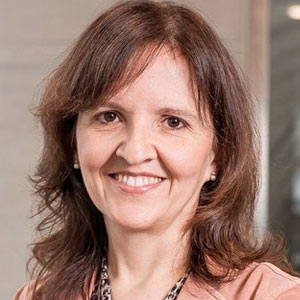
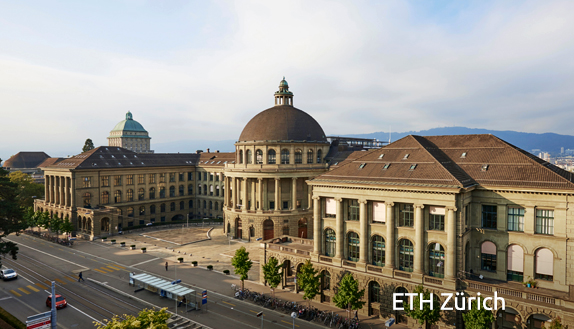
A Glimpse into Mechanics
in Switzerland
SwissMech Seminars is a monthly webinar series taking place at 16:00pm on the second Thursday of each month of the academic year. The talks are organized jointly by ETH Zürich and EPFL Lausanne. The speakers cover theoretical, computational and experimental aspects of solid and fluid mechanics in the broadest sense.

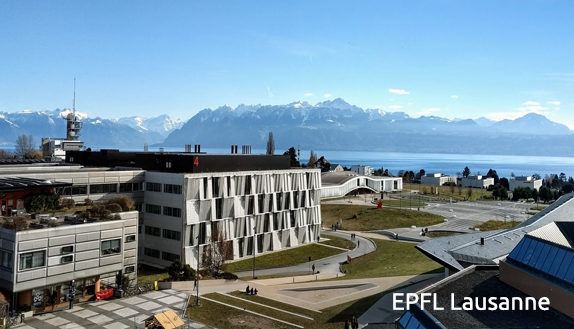
Years 2020-2022
Architected materials
Prof. Dennis M. Kochmann
Mechanics and Materials Laboratory, ETH Zürich
Date/Time: May 12, 2022, Thursday, 16:00-17:00
Abstract: Architected materials (often referred to as mechanical metamaterials) have gained tremendous attention over the past decade. Across engineering disciplines, the modeling, design, fabrication, and characterization of such cellular solids, which derive their properties from small-scale structural architecture, has resulted in a myriad of materials systems with as-designed, optimized mechanical properties – from high stiffness- and strength-to-weight ratios to energy absorption and wave guidance all the way to active and smart reconfigurability. The dream has been to revolutionize our approach to selecting materials for engineering applications: away from property look-up tables for available materials, towards the on-demand creation of novel architected materials with controllable or extreme properties and functionality. Focusing on mechanical properties, we will discuss to what extent this has become the new reality and what challenges we are facing. We will highlight recent examples of modeling and reverse-engineering architected materials with tunable stiffness, toughness, wave motion, shape morphing, and more, and we present experimental examples of their realization and application. This sets the stage for discussing what has been achieved and what lies ahead.
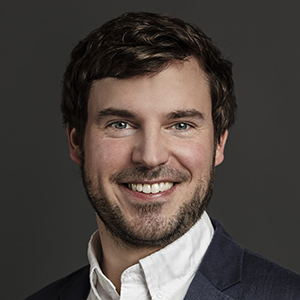
The birth and death of buoyant hydraulic fractures
Prof. Brice Lecampion
Geo-Energy Lab – Gaznat Chair on GeoEnergy, EPFL Lausanne
Date/Time: April 14, 2022, Thursday, 16:00-17:00
Abstract: Propagation of tensile fractures ubiquitously occurs at depth in the upper earth crust due to fluid pressurization associated either with natural causes (magma overpressure, dehydration reaction in subduction zones, hydrothermal systems etc.) or direct anthropogenic fluid injection (well stimulation for hydrocarbons or geothermal fluids production). The growth of such fluid-driven fractures in a solid under pre-existing compressive stresses is governed by the coupling between lubrication flow inside the growing fracture and linear elastic fracture mechanics of the solid. In nature, the initial stress field becomes more compressive with depth, leading to a buoyancy force generated by the difference between the vertical gradient of the minimum stress (acting perpendicular to the fracture plane) and the fluid weight. Once the fracture grows beyond a critical length scale, this buoyancy force strongly affects its propagation. In particular, the ratio between the energy dissipated by viscous flow and fracture surfaces creation sets the dynamics and elongation of such three-dimensional buoyant fractures. The expectancy and variety of shapes of these fractures will be illustrated in the light of typical material and injection parameters encountered in nature, engineering applications and laboratory experiments. Finally, we will explore how typical variation of in-situ stress and material properties at depth can stop the other-wise self-sustained growth of these fractures.
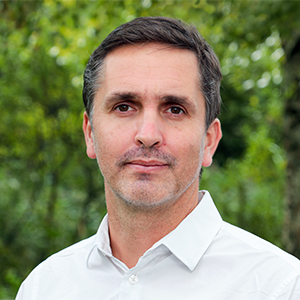
Harnessing the dynamics of acoustically driven two-phase fluid media
Prof. Outi Supponen
Institute of Fluid Dynamics, ETH Zurich
Date/Time: March 10, 2022, Thursday, 16:00-17:00
Abstract: Bubbles oscillate volumetrically under the effect of pressure fluctuations, such as those produced by sound waves. When driven into a violent collapse, they can yield strong sound emissions, high-speed jets, and extreme heating – a behaviour known as cavitation. Here, we will present ongoing research efforts to reach a fundamental understanding of the intriguing dynamics of bubbles across a wide range of scales from a single bubble level to that of bubble clouds. For this, we generally combine ultra-high-speed experiments with theory. More specifically, we will report on our progress in temporally resolving the oscillations and translations of microbubble ultrasound contrast agents, elucidating the role of cavitation in ultrasound-mediated tissue adhesion, reaching extreme flow focusing using tandem bubbles and discussing effective capillarity in ultrasound-driven bubble clouds. The broad aim of this research lies in the quest for harnessing the power of acoustically driven two-phase fluid media for a variety of engineering applications, including medical ultrasound diagnostics, drug delivery, lithotripsy, sonochemistry, surface cleaning and micro-fluidics.
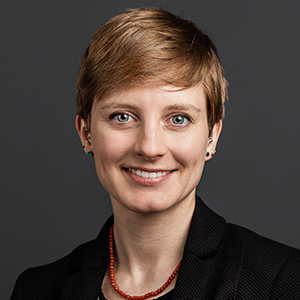
Friction and wear in light of elastic interactions between micro contacts
Prof. Jean-François Molinari
Computational Solid Mechanics Laboratory, Civil Engineering Institute, Materials Science Institute, EPFL Lausanne
Date/Time: February 17, 2022, Thursday, 16:00-17:00
Abstract: It is well known that man-made and natural surfaces are rough, with roughness observed over many length scales. An important consequence is that the real contact area is much smaller than the nominal contact area, and is made of micro contacts that vary in size and shape. It is well known that elastic interactions between nearby micro contacts matter. Elastic interactions are felt over long distances, affect the location and average size of micro contacts, and influence the tribological properties. In particular, in the case of adhesive and abrasive wear, we show how crack shielding mechanisms between nearby asperities promote the formation of larger debris, thereby providing a mechanistic understanding of the transition for mild to severe wear at a critical load.
While these results were initially observed through molecular dynamics simulations, we will discuss our recent efforts at generalizing those early observations with computationally efficient continuum solvers, through the boundary-element method or the finite-element method incorporating phase-field modeling of fracture.
Ultimately, elastic interactions help revise the definition of a contact asperity, by incorporating nearby contact junctions into an effective contact area. The presentation will also explore optimization strategies in order to maximize elastic interactions for more efficient grip or scraping tools technology.
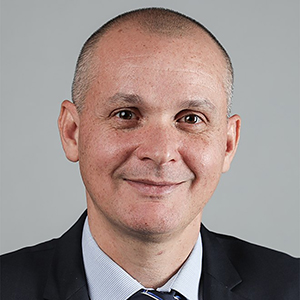
Machine learning based plasticity modeling
Prof. Dirk Mohr
Artificial Intelligence in Mechanics and Manufacturing, ETH Zurich
Date/Time: December 9, 2021, Thursday, 16:00-17:00
Abstract: Machine learning offers a data-driven approach to the development of constitutive models as an alternative to classical physics-based modeling. Recent applications of machine learning in the context of metal plasticity are presented ranging from temperature and rate dependent hardening laws to 3D constitutive models for anisotropic solids. In addition to developing mechanics-specific neural network architectures, new robot-assisted experimental procedures are presented that generate “big data” for the identification of machine-learning based plasticity and failure models from experiments.
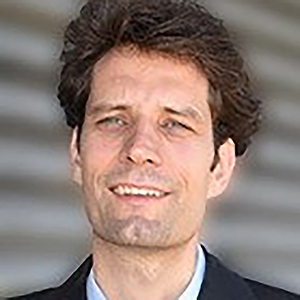
A virtual lab tour of the flexible structures laboratory at EPFL
Prof. Pedro Reis
Institute of Mechanical Engineering, EPFL Lausanne
Date/Time: November 11, 2021, Thursday, 16:00-17:00
Abstract: It used to be that academic seminars involved a researcher visiting a host institution to deliver a talk and meet with colleagues (do you remember those days?!). Times have changed, at least temporarily, but this situation is also opening opportunities. In this ‘talk’, we will be inviting you for a virtual tour of our Flexible Structures Laboratory (fleXLab) at EPFL in Switzerland. We will show you some of our experimental facilities and share some of our recent research activities, focusing on the mechanics of magneto-active structures. Multiple members of our team will be involved in this tour. Research at our fleXLab focuses is centered in the general area of the mechanics of slender structures, which leverage their post-buckling regime for novel modes of functionality. Methodologically, we recognize scaled high-precision model experiments as a powerful tool for discovery in mechanics, supported by theory and computation, in a vision of science-enable engineering and engineering-motivated science. Recently, we have become fascinated with active structures made out of magneto-rheological elastomers that can be actuated in the presence of an external magnetic field. After introducing some recent advances in experimentation, modeling, and computational for this class of systems, we will present a series of concrete examples. Specifically, we will discuss (i) (re)programmable mechanical metamaterials with programmable memory; (ii) magneto-active beams and Kirchhoff-like rods; and (iii) magnetic shells with tunable buckling properties.
This virtual lab will involve the participation of a few members of the fleXLab at EPFL.

Mechanics of spontaneously arrested laboratory earthquakes
Prof. David Kammer
Computational Mechanics of Building Materials, ETH Zurich
Date/Time: October 14, 2021, Thursday, 16:00-17:00
Abstract: Earthquakes, which we experience as ground shaking, consist of sudden relative motion between tectonic plates. The underlying mechanical process involves three phases – the initiation of local slip, its growth along the tectonic fault, and its arrest. This rupture-like process is governed by physics at multiple length scales, making it a highly complex phenomenon that remains only partially understood. This is particularly true for earthquake arrest, which directly affects its magnitude. The current understanding of earthquake arrest is almost exclusively based on remote measurements because most laboratory experiments are too small to allow rupture arrest to occur naturally. However, recently developed large-scale laboratory experiments on granite blocks provide the necessary fault length to generate laboratory earthquake ruptures that not only nucleate and propagate, but also arrest, spontaneously. These experiments provide an opportunity to reexamine and better understand the physics governing earthquake arrest conditions. In this talk, we will discuss various analytical and numerical models that enable in-depth analysis, interpretation and extrapolation of results from such large-scale laboratory earthquake experiments. The results suggest that rupture arrest (at least in the laboratory) is controlled by the driving force rather than by the resistance, as often assumed. Further, we will discuss fault fracture energy, which is a key parameter in the arrest of earthquake ruptures. We will present a minimal numerical model with scale-invariant fault fracture energy in accordance with laboratory observations. However, when applying seismological approaches to estimate the fault fracture energy, it appears to be scale-dependent, similar to field observations, despite being scale-invariant. Therefore, the model reconciles conflicting observations from the field and the laboratory, and provides a pathway for more realistic models of earthquake arrest mechanisms.
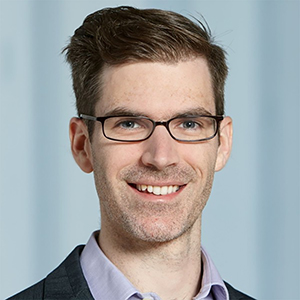
From patterns in turbulence to the buckling of shells – the role of unstable invariant solutions in nonlinear mechanics
Prof. Tobias Schneider
Emergent Complexity in Physical Systems Laboratory, EPFL Lausanne
Date/Time: May 6, 2021, Thursday, 12:15-13:15
Abstract: The transition to turbulence of fluid flows is ubiquitous, arising in our every-day experience when we ride a bicycle or take off in an airplane. Despite this ubiquity, the laminar-turbulent transition in wall-bounded flows is one of the least understood phenomena in fluid mechanics. During transition, the flow may self-organize into patterns with regular spatial and temporal structure, whose origins remain unexplained. A canonical flow exhibiting a large variety of complex spatio-temporal flow patterns is thermal convection in a fluid layer between two parallel plates kept at different temperature and inclined against gravity. We study the dynamics of the so-called inclined layer convection (ILC) system, using a fully nonlinear dynamical systems approach based on a state space analysis of the governing equations. Exploiting the computational power of our highly parallelized numerical continuation tools (www.channelflow.ch), we construct a large set of invariant solutions of ILC and discuss their bifurcation structure. We show that unstable equilibria, travelling waves, periodic orbits and heteroclinic orbits form dynamical networks that support moderately complex chaotic dynamics.
The introduced nonlinear dynamical systems methods centered around invariant solutions are not only revolutionizing our understanding of fluid turbulence but they may also help explain complex behaviour in other intrinsically nonlinear mechanical systems. We will specifically argue that unstable elastic equilibria control when thin-walled cylindrical shells such as rocket walls or soda cans buckle and collapse. This may open avenues towards predicting the notoriously imperfect-sensitive load-carrying capacity of shell structures without prior knowledge of the shell’s defects.
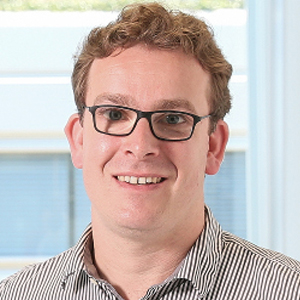
On the coalescence of structural mechanics models with data for condition monitoring
Prof. Eleni Chatzi
Chair of Structural Mechanics, ETH Zurich
Date/Time: April 8, 2021, Thursday, 12:15-13:15
Abstract: The monitoring of the condition of structural systems operating under diverse dynamic loads involves the tasks of simulation (forward engineering), identification (inverse engineering) and maintenance/control actions. The efficient and successful implementation of these tasks is however non-trivial, due to the ever-changing nature of these systems, the variability in their interactive environment, and the polymorphic uncertainties involved. Structural Health Monitoring (SHM) attempts to tackle these challenges by exploiting information stemming from sensor networks. SHM comprises a hierarchy across levels of increasing complexity aiming to i) detect damage, ii) localize and iii) quantify damage, and iv) finally offer a prognosis over the system’s residual life.
When considering higher levels in this hierarchy, including damage assessment and even performance prognosis, purely data-driven methods are found to be lacking. For higher-level SHM tasks, or for furnishing a digital twin of a monitored structure, it is necessary to integrate the knowledge stemming from physics-based representations, relying on the underlying mechanics. This talk discusses implementation of such a hybrid approach to SHM for tackling the aforementioned challenges. Among other topics, we will discuss the potential and limitations of purely data-driven schemes, and the benefits stemming from infusion of data with reduced order structural mechanics models, in support of diagnostics and prognostics for engineered systems.
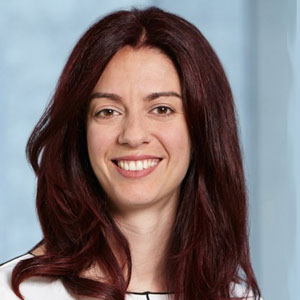
Particles and snowflakes falling through turbulence
Prof. Dr. Filippo Coletti
Experimental Fluid Dynamics, ETH Zurich
Date/Time: February 11, 2021, Thursday, 12:15-13:15
Abstract: Multiphase flows in which an inertial dispersed phase interacts with a turbulent fluid flow are ubiquitous in environmental, industrial and biomedical settings. Even stripped down to its minimal components, the problem remains complex because of the wide range of scales involved and the multiple physical parameters at play. In this talk, I will first focus on the seemingly simple case of dilute microscopic spherical particles falling through homogeneous air turbulence. A unique experimental facility is leveraged, in which hundreds of jets are individually controlled to produce the largest volume of zero-mean-flow homogeneous turbulence ever created. Using high-resolution laser imaging, I will show how inertial particles group in larger clusters than previously thought, experiencing anomalously large accelerations and a multi-fold increase in fall speed compared to their still-air terminal velocity. At concentrations found in dust storms, the particles also cause a substantial increase in turbulence intensity, at odds with most numerical simulations. The relevance of such observations is demonstrated by outdoor field measurements, in which snowflakes are illuminated and tracked over vertical planes about 30 m^2 using high-speed cameras. The snow particles display strikingly similar behaviors as seen in the laboratory, including self-similar clustering, anomalous accelerations, and turbulence-enhanced fall speed. These findings demonstrate that the fundamental phenomenology of particle-laden turbulence can be leveraged towards the predictive understanding of snow precipitation. They also demonstrate how environmental flows can be used to investigate dispersed multiphase flow physics at Reynolds numbers not accessible in laboratory experiments or numerical simulations.
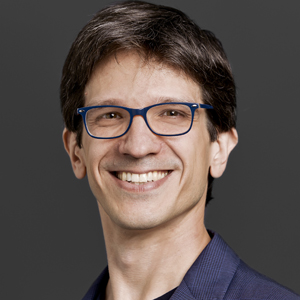
Mechanical behavior of fluid-induced earthquakes
Prof. Marie Violay
Laboratory of Experimental Rock Mechanics, EPFL Lausanne
Date/Time: December 10, 2020, Thursday, 12:15-13:15
Abstract: Fluids play an important role in fault zone and in earthquakes generation. Fluid pressure reduces the normal effective stress, lowering the frictional strength of the fault, potentially triggering earthquake ruptures. Fluid injection induced earthquakes (FIE) are direct evidence of the effect of fluid pressure on the fault strength. In addition, natural earthquake sequences are often associated with high fluid pressures at seismogenic depths. Although simple in theory, the mechanisms that govern the nucleation, propagation and recurrence of FIEs are poorly constrained, and our ability to assess the seismic hazard that is associated with natural and induced events remains limited. Here we study the role of pore fluid pressure on fault mechanical behavior during the entire seismic cycle. i.e., strain rates from ~10-9/s (fault creep) to ~103/s (co-seismic slip). We reproduced at the scale of the laboratory miniature injection experiments. The velocity of the rupture propagation front, fault slip, dynamic stress drop and acoustic emission were recorded with a state of-the-art monitoring system. We demonstrated that the nature of seismicity is mostly governed by the initial stress level (i.e pore fluid pressure) along the faults and that the dynamic fault weakening depends on both fluid rheology and thermodynamic.
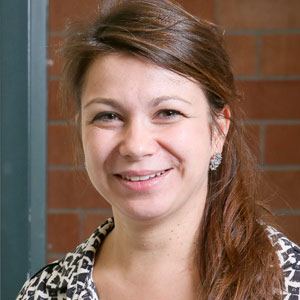
Phase-field modeling of brittle fracture: an overview and a new paradigm to address multiple solutions
Prof. Laura De Lorenzis
Computational Mechanics Group, ETH Zurich
Date/Time: November 12, 2020, Thursday, 12:15-13:15
Abstract: The phase-field modeling approach to fracture has recently attracted a lot of attention due to its remarkable capability to naturally handle fracture phenomena with arbitrarily complex crack topologies in three dimensions. On one side, the approach can be obtained through the regularization of the variational approach to fracture introduced by Francfort and Marigo in 1998, which is conceptually related to Griffith’s view of fracture; on the other side, it can be constructed as a gradient damage model with some specific properties. The functional to be minimized is not convex, so that the necessary stationarity conditions of the functional may admit multiple solutions. The solution obtained in an actual computation is typically one out of several local minimizers. Evidence of multiple solutions induced by small perturbations of numerical or physical parameters was occasionally recorded but not explicitly investigated in the literature.
In the first part of this talk, the speaker gives a brief overview of the phase-field approach to fracture and of recent related research carried out in her group. In the second part of the talk, the focus is placed on the issue of multiple solutions. Here a paradigm shift is advocated, away from the search for one particular solution towards the simultaneous description of all possible solutions (local minimizers), along with the probabilities of their occurrence. We propose the stochastic relaxation of the variational brittle fracture problem through random perturbations of the functional and introduce the concept of stochastic solution represented by random fields. In the numerical experiments, we use a simple Monte Carlo approach to compute approximations to such stochastic solutions. The final result of the computation is not a single crack pattern, but rather several possible crack patterns and their probabilities. The stochastic solution framework using evolving random fields allows additionally the interesting possibility of conditioning the probabilities of further crack paths on intermediate crack patterns.
